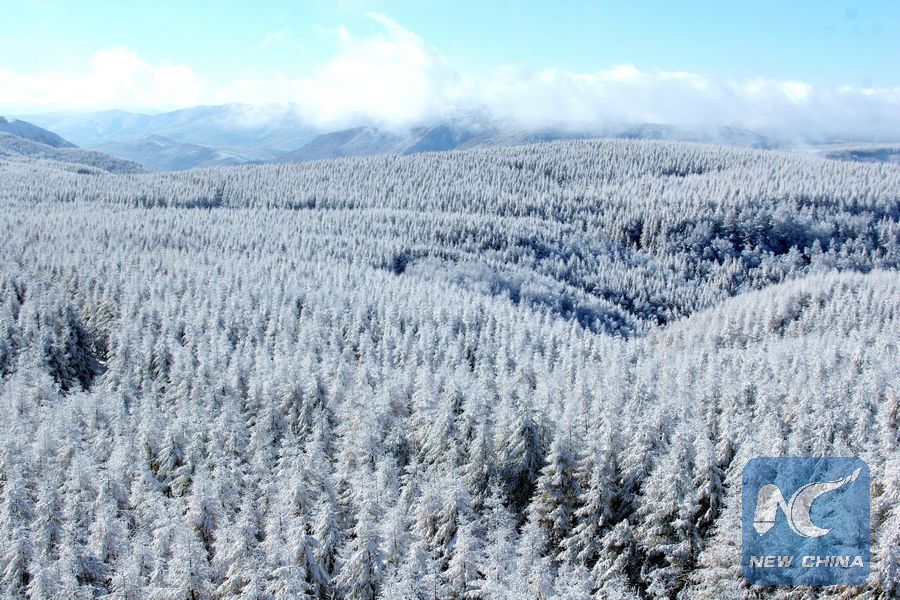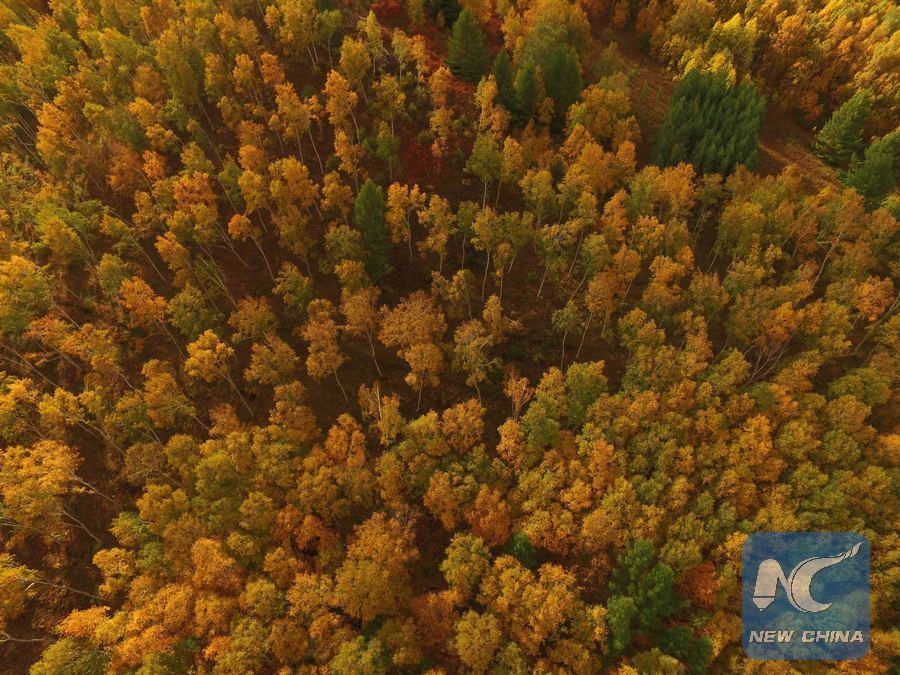
File photo shows the Saihanba forest in Weichang Manchu and Mongolian Autonomous County in Chengde City, north China's Hebei Province. Saihanba was a piece of barren land 55 years ago, but decades of afforestation efforts have turned it into an important ecological shield for Beijing and Tianjin. (Xinhua/Wang Long)
NAIROBI, Dec. 5 (Xinhua) -- China's Saihanba Afforestation Community has won the UN's top environmental honor, the Champions of the Earth award, during the UN Environmental Assembly held in Kenya's Nairobi for "transforming degraded land into a lush paradise."
WHERE IS SAIHANBA
About 400 kilometers north of Beijing lies a large swathe of trees that is critically important to water and air quality in the capital. It is an environmental shield that reduces sandstorms.
The Saihanba forest purifies 137 million cubic meters of water for Beijing-Tianjin area and can deliver half a million tons of oxygen, but more than half a century ago it was nothing more than a barren land.

Aerial photo taken on Sept. 22, 2017 shows the autumn scenery of the Saihanba forest in Weichang Manchu and Mongolian Autonomous County in Chengde City, north China's Hebei Province. (Xinhua/Liu Huanyu)
Zhao Yunguo, director of the forest management office, pointed towards a tree, about 20 meters tall, and called it "a tree of merit."
"Fifty-six years ago, there was only one tree, this one. Without it, there would have been no Saihanba," Zhao said.
Saihanba is a combination of Chinese and Mongolian meaning "beautiful highlands". Until the Qing Dynasty (1616-1912), it was a royal hunting land.
When the dynasty was on its last legs, Emperor Tongzhi opened the land for lumber to make up for a state deficit. The area quickly turned into sterile land on the verge of a Mongolian desert.
Efforts to rehabilitate the land started in the 1960s. In October, 1961, a group of six arboriculturalists went on an expedition through the land and studied the possibility of growing trees there.
"They found this one tree, standing alone in the vast land. They literally went to hug the tree, and every one was in tears," said Zhao.
If one tree can survive here, so can millions of trees - such was people's hope with Saihanba. About 56 years later, hope turned into reality. The barren wasteland is now a vast forest of 7.5 hectares.

